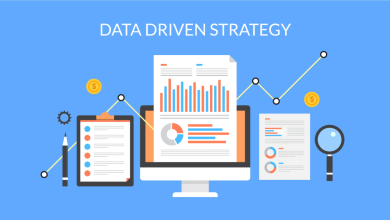As consumers increasingly shift their banking activities to digital channels, the financial services industry finds itself at a pivotal moment. The rapid adoption of mobile banking and online platforms is reshaping the landscape, creating both challenges and opportunities for banks looking to capture market share and boost sales. But how can banks successfully navigate this digital transformation to drive sustainable growth?
1. End-to-End Digitized Customer Journeys
End-to-end (E2E) digitization of customer journeys is vital for banks aiming to capture the full value of digital. Seamless, integrated channels allow customers to move smoothly from acquisition to ongoing relationship management. This includes offering a unified mobile-first experience that integrates seamlessly with assisted channels, ensuring that customers enjoy a cohesive and frictionless journey, regardless of how they interact with the bank.
Moreover, banks can benefit from digitizing not only the front-end customer interactions but also optimizing back-end processes with automation and AI, reducing costs and improving efficiency. The key design principles for E2E digitization include customer-centric experience design, mobile-first strategies, and front-to-back process optimization, all of which are critical for creating seamless and efficient customer experiences.
2. Comprehensive Marketing Approach
To effectively drive digital sales, banks must adopt a comprehensive approach to marketing that encompasses both engagement and conversion. By using channels like Search Engine Marketing (SEM), Search Engine Optimization (SEO), display advertising, and social media, banks can enhance awareness and drive traffic. Conversion optimization tactics such as CRO A/B testing, landing page optimization, and advanced analytics further ensure that this traffic converts into meaningful customer relationships. The use of data analytics to inform decision-making across both marketing and operational processes will also help banks stay agile and responsive to changing market dynamics.
This holistic approach also involves leveraging various communication channels, such as email, SMS, outbound call centers, social media, and digital assets like private banking apps, to create an integrated experience. By focusing on both attracting and converting customers, banks can maximize their marketing efficiency and growth potential.
3. Personalized Experiences
Driving growth hinges on creating highly personalized experiences for customers across the entire journey. From precise targeting of high-value customers to onboarding, retention, and loyalty-building, personalization enables banks to offer the right product at the right time. Leveraging analytics and AI, banks can curate experiences for different segments, dynamically responding to individual needs and increasing engagement levels. The emphasis on personalization aligns with the modern consumer’s expectations for convenience and relevance, enhancing loyalty while reducing churn.
Personalized onboarding, ongoing communication, and tailored offers are key to deepening relationships with customers. Active engagement through personalized channels ensures that customers receive value-added services that meet their unique needs, resulting in increased loyalty and lifetime value.
4. Tech-Enabled Solutions
Banks can also leverage tech-enabled solutions to optimize branch performance and strengthen sales force effectiveness. By optimizing physical footprints, banks can focus their branch networks on locations with the highest potential for growth. Additionally, remote advisory capabilities provide flexible, expert advice to customers, particularly for complex products, while using 360-degree customer views helps bankers develop leads and deepen relationships.
Footprint optimization can drive sales acceleration by focusing on high-traffic and affluent areas, while remote advisory services extend reach beyond traditional branch networks, providing more convenient access to financial expertise. Tech enablement also allows bankers to have a comprehensive view of customer relationships, thereby enhancing their ability to deliver targeted services and maximize sales force productivity.
Conclusion: Building the Future Digital Bank
The future of banking lies in fully harnessing digital transformation across marketing, sales, and customer experience. By integrating E2E journey digitization, a comprehensive marketing approach, personalized engagements, and tech-enabled solutions, banks can unlock the potential for substantial sales growth. The journey is complex, but the reward—increased customer satisfaction, loyalty, and long-term value—makes it well worth the effort. Those banks that successfully leverage data, technology, and customer insights will be best positioned to lead the market, drive revenue growth, and build lasting relationships with their customers.



